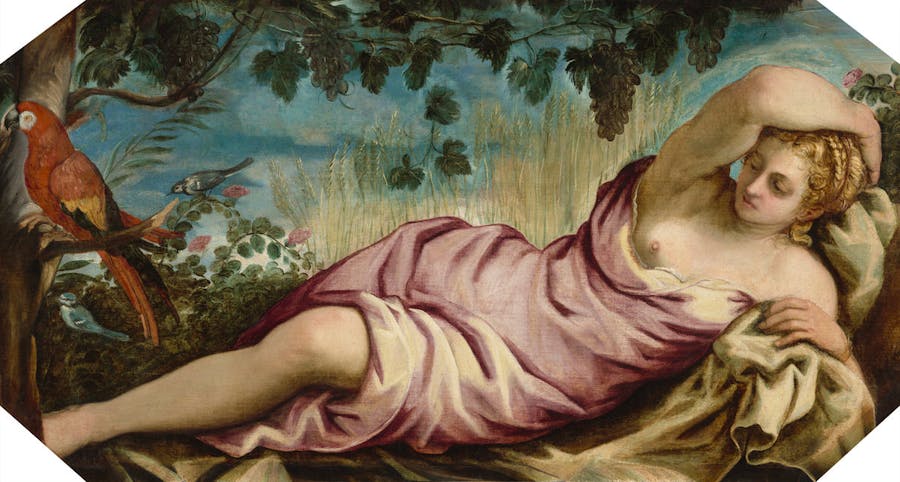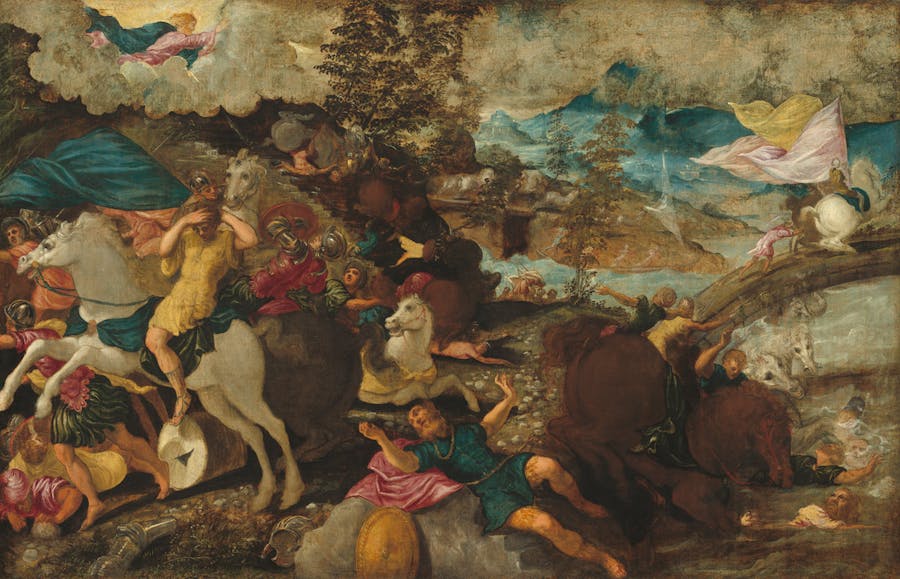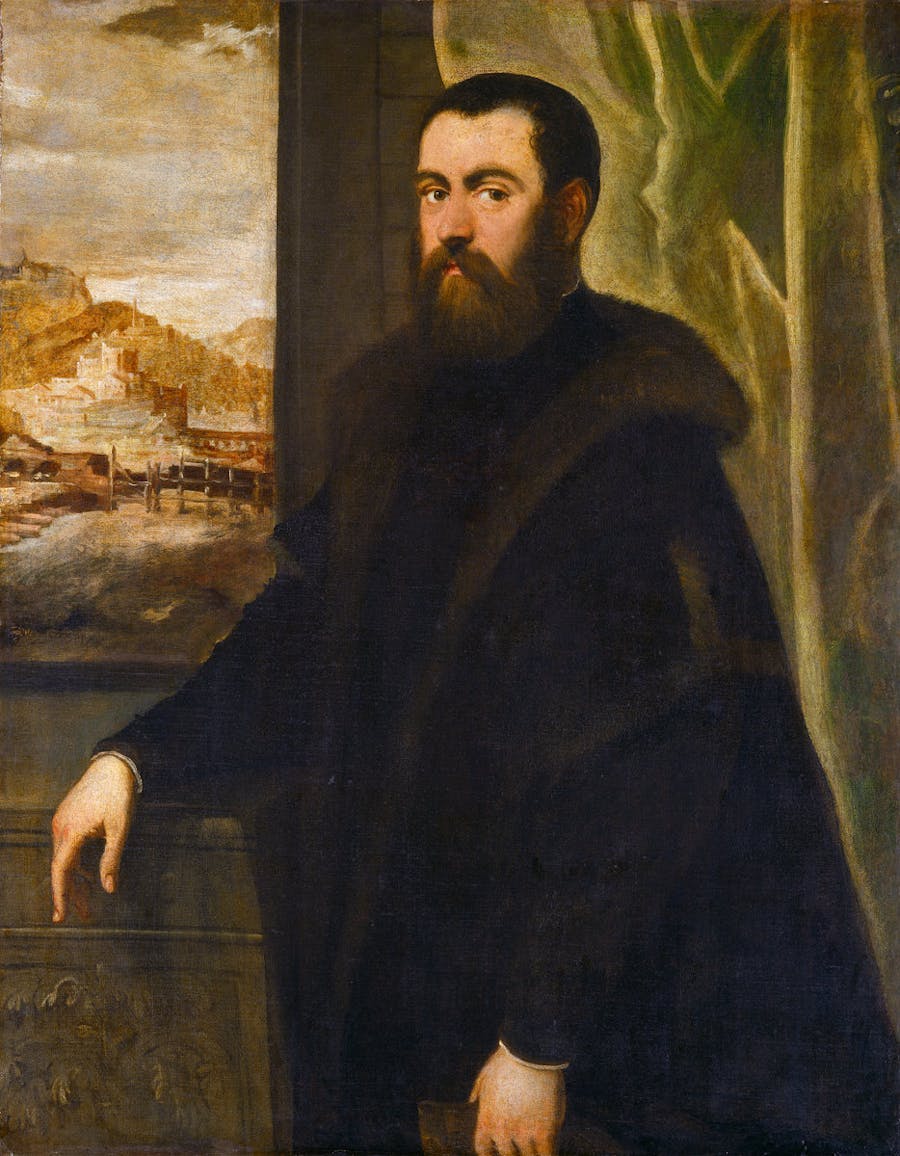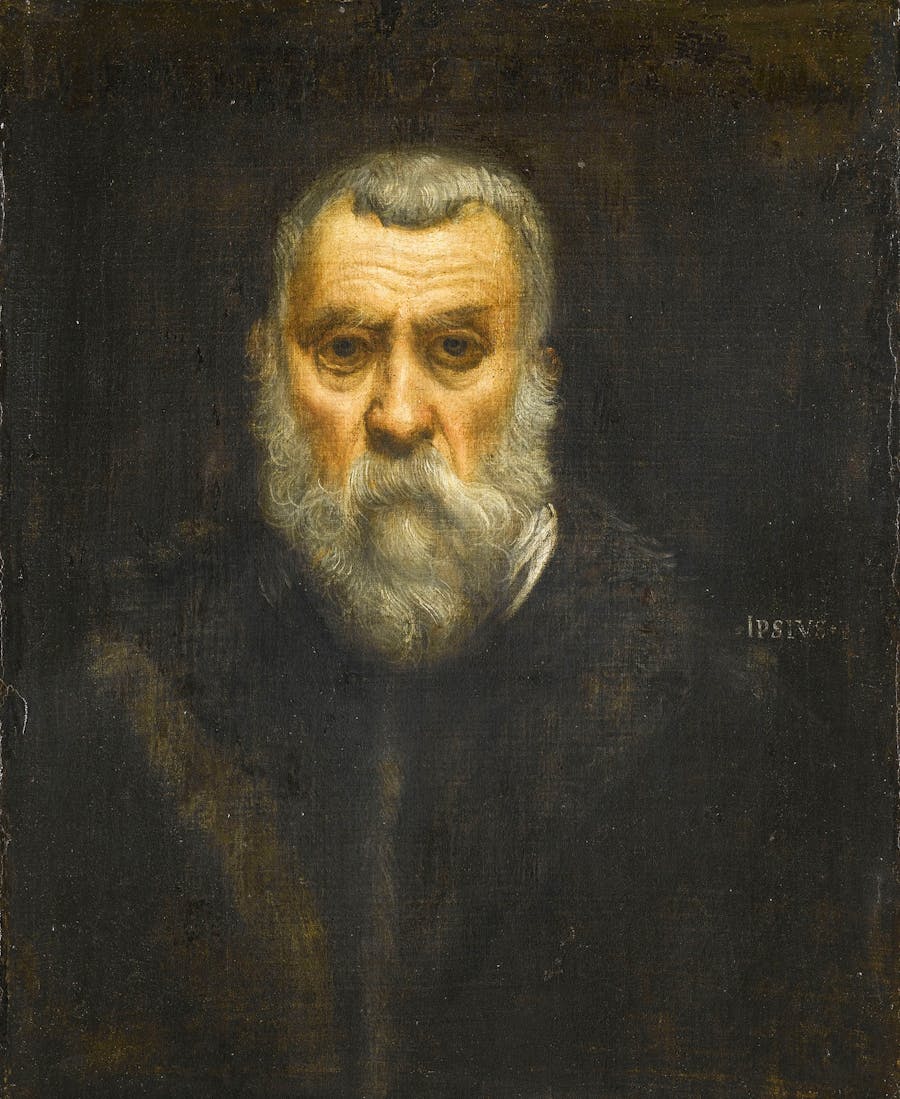Tintoretto: The Venetian Virtuoso
The triumphant Renaissance master elevated painting to theatrical heights.
Tintoretto was born as Jacopo Comin in 1519 in Venice and was dubbed Tintoretto, which in Italian means "little dyer," because his father was a dyer of cloths. His artistic talent was visible from a young age, so his father took him to the studio of Venice's foremost master of the time, Titian. However, perhaps due to Titian's recognition of the youth's immense talent, Tintoretto was let go from Titian's studio after just 10 days. From then on, Tintoretto was largely self-taught, studying Michelangelo's sculptures, which captured the human body realistically in various states of motion, and incorporating the brilliant use of color that he admired from Titian. Later, in his own studio, he would inscribe on the wall, "The draftsmanship of Michelangelo and coloring of Titian" to inspire his artistic process.
Throughout his 20s, Tintoretto gained commissions and status through savvy business and marketing practices: he would give away artworks for free, set low prices for commissions and finish impressive works remarkably quickly. He acquired the nickname "Il Furioso" for his intense method of painting and his dominant personality, which was described as "a single peppercorn that takes over the flavor of a whole dish."
Related: How The Medici Influenced Renaissance Florence

Tintoretto's themes were found in Greek and Roman mythology, Biblical scenes and legends with Christian themes. The narrative quality of his oil paintings, despite their flair for the dramatic and unfinished, painterly strokes, were carefully planned and organized by the artist, first through drawings, before being painted on canvas.

Although Tintoretto's most famous works are his mythological and Christian scenes, he was also a very fine portraitist. Although Titian, 30 years his senior, was better known at the time, he traveled frequently to take commissions throughout Europe and the Holy Roman Empire, leaving Tintoretto as the master of his home city. Tintoretto painted portraits of the city's most important leaders and citizens and created works that cemented the power of Venice's dynastic families. His style reveals a masterful command of chiaroscuro (the contrast between light and dark tones), rich color and the exquisite rendering of body torsion and facial detail.
Related: Cimabue: Late Medieval Genius

One of Tintoretto's most repeated scenes was the Last Supper, of which he did nine different versions throughout his lifetime. He was awarded commissions around the city, from the interiors of confraternities to church altarpieces to the interior of the grand Doge's Palace, the waterfront residence of Venice's supreme leader. After a major work of the Doge's Palace was destroyed in a fire in 1577, a competition for a new painting was announced. Although Veronese, one of Venice's trifecta of great artists along with Titian and Tintoretto, won the commission, he died of an infection soon after and it was then awarded to Tintoretto.

He produced an elaborate oil sketch for the work showing Jesus crowning Mary as Mother of God surrounded by angels, the saved and cherubs, but the final masterpiece was mostly done by his studio, which included three of his children. It extends over 80 feet long, the largest oil painting ever made. The smaller sketch, now at the Louvre, is a triumph in itself, done entirely by Tintoretto's masterful hand, with hundreds of detailed figures turning, reaching, floating and embracing in heaven.
Related: El Greco: A Meeting of East and West

Tintoretto's crowning achievement, however, was the opportunity to decorate the interior of the Scuola di San Rocco, a confraternity in Venice. Confraternities grew very wealthy because they were similar to social clubs for Christians who would donate hefty dues and include them in their wills. He started contributing artwork to the confraternity in 1560 and would continue to until his death. The San Rocco is often referred to as Tintoretto's Sistine Chapel, with over 40 of his works adorning the walls and ceilings.
Related: A New Renaissance for Old Masters
Towards the end of his life, Tintoretto painted his last self-portrait, depicting his drawn face, greying beard and solemn eyes, which was described by Edouard Manet as "one of the most beautiful paintings in the world." It was finished in 1588, before he began work on his magnum opus, Paradise, after which he largely retired from painting. In 1594, he passed away at the age of 75.

The masterful Tintoretto infused late Renaissance-era art with a sense of drama, rich color, movement, expression and a realist quality that would become the hallmarks of future movements like Baroque and Mannerism. His sensitive showmanship, which elevated painting to theatrical heights and explored the ways a narrative is disseminated through motion, color and composition.


